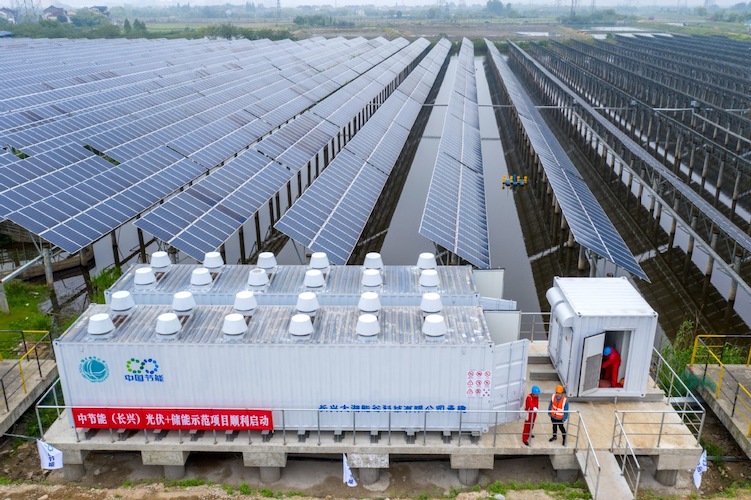(ATF) Foreign investors increased their holdings of Chinese bonds for 18 consecutive months, with an average daily transaction of 26 billion yuan, a record high, as of the end of May.
Jing ShunHu Yi, head of Asian credit research, believes that one of the main reasons driving foreign investors to increase allocation is the rate of return. The gap between the yields of Chinese bonds and the yields of major developed countries has widened.
The current 10-year Treasury yield spread between China and the United States is about 215 basis points, which is the highest level in the past 10 years.
At the same time, China’s domestic bonds and the world’s major interest rate debt and credit bond markets show a relatively low correlation, which means that adding Chinese bonds to the portfolio will help diversify the investment portfolio and diversify risks.
This has further increased the investment momentum of international investors, and China has controlled the epidemic in a more orderly way, which has strengthened the confidence of international investors. In the course of the global market sell-off in March this year, the domestic credit bond market performed far better than the major global credit bond markets during the peak of the epidemic.
On June 18, China People’s Bank vice-president and director of the Foreign Exchange Bureau, Pan Gongsheng spoke at the 12th Lujiazui Forum in Shanghai. He said: “At present, my country’s bond and stock market is the second largest in the world, with more than 160 trillion yuan, and has been included in many mainstream international indexes. The allocation of RMB (yuan) assets by international institutions has reached 6.4 trillion yuan, and has grown at an average annual rate of more than 20%. In particular, the holding of domestic yuan bond assets by foreign investors has grown at an average annual rate of nearly 40% in recent years.”
Important measures
Recently, China integrated investment channels in the bond market, cancelled QFII and RQFII quota management, expanded the trial of the Qualified Domestic Limited Partner System (QDLP) and Qualified Overseas Limited Partner System (QFLP), and regulatory authorities have liberalised share ratio restrictions for foreign financial institutions.
These are all important measures to expand the opening up of the onshore market.
“From 2017 to now, we have seen an increase every year in the proportion of Chinese investment in government bonds,” Invesco managing director and Asia-Pacific fixed income director Huang Jiacheng said.
He added: “Since the epidemic, the performance of Chinese government bonds when compared to other countries for comparative assets China is relatively stable. It will also attract many emerging market funds and developed market funds to invest in Chinese government bonds.”
As of the end of May, a total of 828 foreign institutional entities entered the market, 450 of which entered the market through direct investment channels, while 548 entered the market through the “bond connect” channel, and 170 entered through both channels.
“Our research shows that global emerging markets funds flow into the Chinese market is compounded growth – you can see every year many investors have a great interest in Chinese government bonds,” Huang Jiacheng said.
And not only treasury bonds. Foreign investors’ interest in China’s credit bonds is also rising.
Four stages
Huang Jiacheng believed that investment of overseas funds in Chinese bonds is divided into four stages: in the first stage, the main target is interest rate bonds; In the second stage, they begin to look at the relatively stable urban investment bonds, credit bonds, 3A and 2A+ rated credit bonds; In the third and fourth stages, foreign capital may vote for 2A-rated bonds.
“Many foreign investors are very interested in credit bonds and are slowly increasing their investment.” he said.
Morgan Stanley chief economist Xing Ziqiang believes that overseas investors are now very interested in China’s bond market. With the global embrace of zero interest rates, or negative interest rates, and quantitative easing, China’s sovereign asset, the national debt, still shows relatively strong returns. “Our judgment on China’s accelerated capital market opening up, absorbing nearly $100 billion in bonds and stock market inflows every year, has not changed.”
Xing Ziqiang suggested that in this process, the reform of financial markets and the growth of the local currency market should be incorporated into the fast lane, such as the establishment of the yield curve, an increase in the supply of long-term government bonds, and the need to add some risk hedging tools, iIncluding interest rate swaps.
This would help to deepen and expand the yuan asset market, and ultimately increase the attractiveness of international funds. From this perspective, China’s bond market has great potential to attract more foreign investment, he told Eastmoney.com.
























